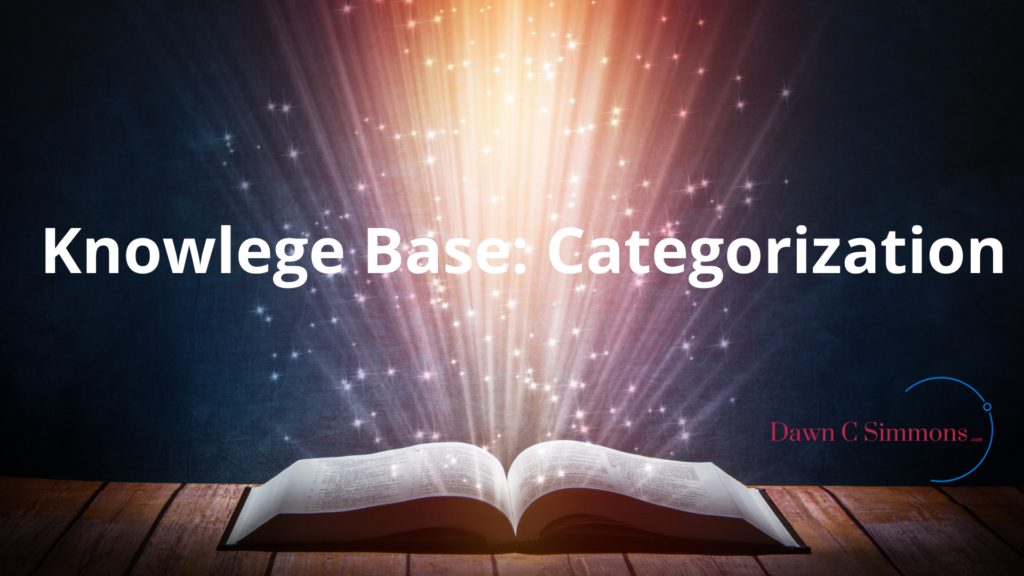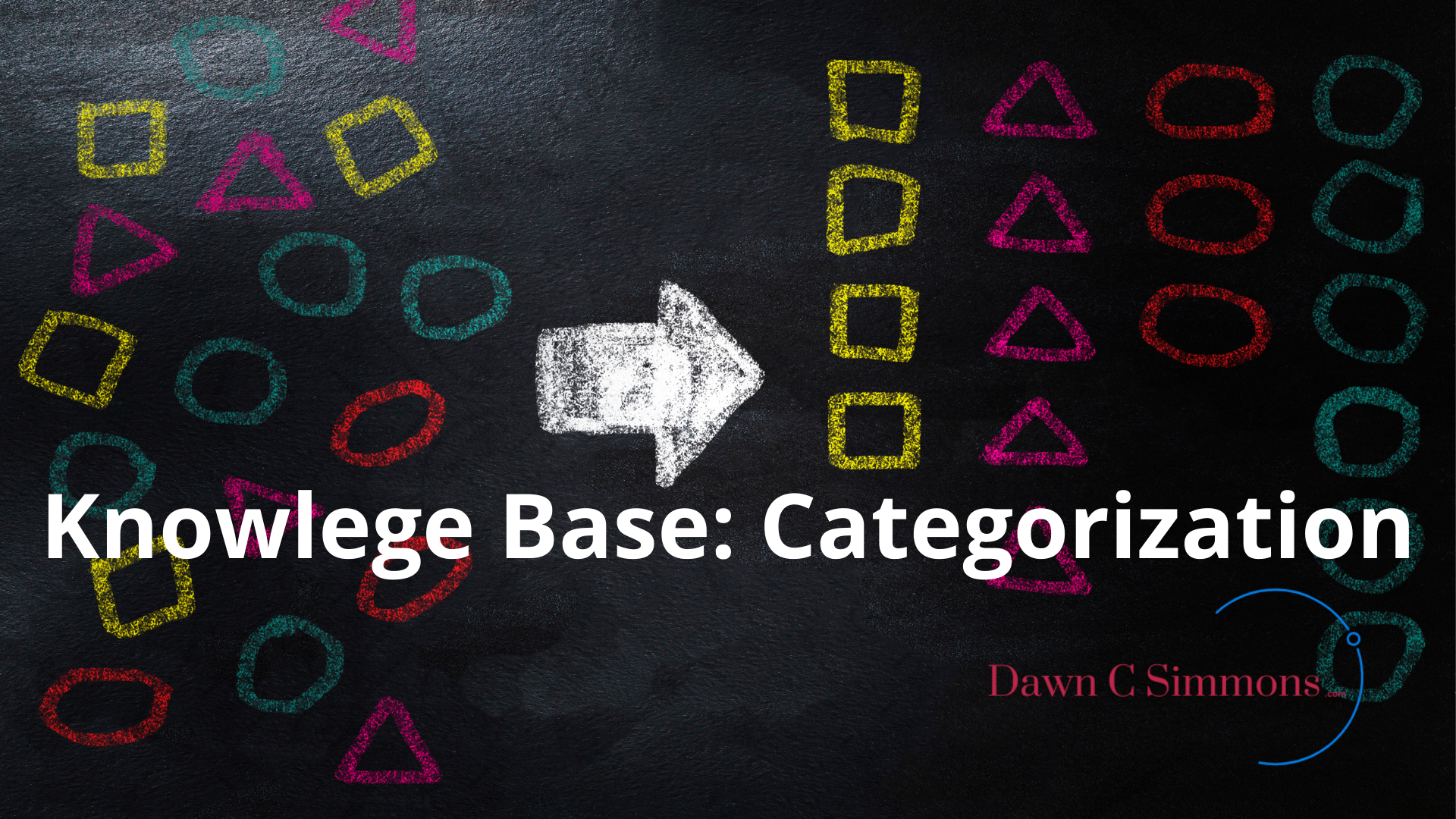Knowledge Categorization “Find-ability”
Knowledge Categorization “Find-ability” is about defining necessary categorization and keep it simple to help find knowledge with efficient service categorization. Enhance the findability of your services with efficient service categorization. Streamline navigation and improve user experience by organizing services into meaningful categories.
Boost productivity and user satisfaction with our service categorization solution. Discover how ServiceNow can help you optimize knowledge article findability today.
When it comes to categorizing knowledge in ServiceNow, simplicity and scalability are key. Keeping the categories as close as possible to the out-of-the-box configuration ensures easy navigation, even on mobile devices. Each knowledge catalog can be tailored for both internal and external ITIL users, providing a versatile knowledge management solution.
To set up knowledge base categories, follow these steps: a. Navigate to Knowledge > Administration > Knowledge Bases. b. Select “KB Categories” and click on “New” to create new categories. c. Assign meaningful names to the categories and associate them with the relevant knowledge base.
Knowledge Categorization “Find-ability” Insider Tips
Effective knowledge categorization is crucial for organizing and managing information efficiently. By implementing insider tips and best practices, organizations can enhance the usability and accessibility of their knowledge base.
- Keep it Simple and Intuitive: Simplicity is key when it comes to knowledge categorization. Use clear and concise category names that accurately represent the content within. Avoid overcomplicating the structure, making it intuitive for users to navigate and find relevant information.
- Balance Generalization and Specificity: Striking the right balance between generalization and specificity is important. Categories should be broad enough to encompass related topics but specific enough to avoid confusion. Subcategories can be used to provide more granular classification within broader categories.
Using Metatags in Knowledge Categorization “Find-ability”
Incorporate Metadata and Tags: Metadata and tags provide additional context and enhance searchability. Assign relevant metadata such as keywords, tags, or labels to knowledge articles within each category. This facilitates easier filtering, sorting, and retrieval of information.
Regularly Review and Refine: Knowledge categorization is an iterative process. Regularly review and refine the categorization structure based on user feedback, evolving information needs, and changing organizational requirements. Stay agile and adaptable to optimize the categorization over time.
Provide Clear Guidelines: To maintain consistency in knowledge categorization, establish clear guidelines for authors and contributors. Outline naming conventions, category creation processes, and provide examples and best practices to ensure uniformity and adherence to standards.
Seek User Feedback: Engage with users and seek their feedback on the knowledge categorization. User insights can provide valuable input for improvements and identify any pain points or areas of confusion. Actively involve users in the categorization process to create a user-centric knowledge base.
End User Categorization
While the categories in end-user knowledge management databases can vary based on the ServiceNow platform’s version and configuration, here are some commonly included categories in the default setup:
- Account and Access: This category focuses on knowledge articles regarding user account creation, access rights management, password management, and authentication processes.
- Email and Communication: Topics related to email setup, configuration, troubleshooting common email issues, and effective management of communication tools.
- Software and Applications: This category covers commonly used software applications, including the Microsoft Office Suite, web browsers, and other productivity tools.
- Hardware and Devices: Guides for setting up and troubleshooting hardware devices, such as printers, scanners, and mobile devices.
- Network and Connectivity: Knowledge articles addressing connecting to networks, troubleshooting network connectivity issues, and resolving common network problems.
- Troubleshooting and FAQs: A repository for frequently asked questions and troubleshooting guides, covering common issues across various technology areas.
- Self-Service Portal: Focuses on guiding users on how to effectively utilize the self-service portal, access relevant resources, submit requests, and find necessary information.
- Training and Tutorials: Step-by-step instructions, video tutorials, or user guides to help end-users learn and utilize various technology tools and software.
- Security and Privacy: Within this category, you’ll find knowledge articles addressing security best practices, data privacy guidelines, and information on protecting personal and sensitive information.
- Mobile Devices: This category specifically covers mobile devices, including setup, configuration, troubleshooting, and common mobile device management (MDM) questions.
These categories lay a strong foundation for effectively organizing end-user knowledge. The ultimate aim is to create a knowledge base that empowers users to efficiently find the information they require.
Enhancing IT Knowledgebase for ITIL Users: Exploring Effective Strategies
Let’s explore key IT knowledge categories that effectively organize and manage information:
- Hardware and Infrastructure: This category covers computer hardware, networking devices, servers, data centers, and infrastructure operations.
- Software and Applications: Focus on software applications, operating systems, installation, configuration, troubleshooting, and optimizing software usage.
- Security and Compliance: Safeguarding data integrity and protection, with information security, data protection, cybersecurity practices, compliance regulations, risk management, and incident response.
- Network and Connectivity: Encompassing network protocols, architecture, troubleshooting, internet connectivity, wireless networks, and administration.
- Databases and Data Management: Systems, data modeling, administration, backup and recovery, and SQL.
- IT Service Management (ITSM): IT service delivery, ITIL processes, incident, knowledge, change management, problem, request service desk operations.
- Cloud Computing: Guiding utilizing cloud technology effectively, into cloud service models, deployment, infrastructure, security.
- Programming and Development: Coding best practices, version control and Devops efforts.
- End-User Support: End-users, troubleshooting, hardware, software problem resolution, and user training, ensures smooth user experiences.
- IT Project Management: Focus on project planning, execution, risk management, and documentation, for successful project delivery.
Knowledge Categorization “Find-ability” using these foundational categories provide a strong foundation for effective IT knowledge organization.

Knowledge Management 101 | AI: Knowledge Centered Support | Glossary of KCS Terms | KCS Guide |
ServiceNow Key Resources:
In order to effectively organize and manage knowledge articles in ServiceNow, it is important to utilize key resources and functionalities. Here are some essential tasks and features:
- Associate a knowledge article with a taxonomy category: By linking a knowledge article to a specific taxonomy category, you enhance its discoverability and ensure it appears in relevant searches. This allows users to find the information they need more efficiently.
- Create a knowledge article Utilize the knowledge management capabilities of ServiceNow to create informative and well-structured knowledge articles. Include relevant content, clear instructions, and helpful visuals to provide users with comprehensive information.
- Map related articles: Establish connections between knowledge articles that are related or provide additional context to enhance the user’s understanding. By mapping related articles, users can easily navigate between interconnected topics and access comprehensive information.
- Move a knowledge article: If you need to reorganize your knowledge base or update its categorization, ServiceNow enables you to easily move knowledge articles to different categories. This ensures that articles are placed in the most appropriate location for improved accessibility.

Thursday July 13, 2023 is the itSMF Unleashing the power of AI for Knowledge Centered Support Panel Discussion.
-
Getting Started
- AI: ServiceNow Virtual-Agent Chatbot
- BMC Remedy ITSM Reference
- Burp Suite Professional & Web Security Process
- COE for Human Resources
- Conduct A Windows-Security Scan
- Employee Journey Management ServiceNow
- Getting Started: Engagement Manager
- Introduction to Knowledge Management
- Knowledge Categorization "Find-ability"
- One-IT: Effective Ticket Handling
- Productivity Tips for Knowledge-Users
- Productivity: Service Operations Workspace
- Quick Start Guide
- Service Catalog Order Guides
- Your Next Steps
-
- Advanced Program Management
- AI: ServiceNow Virtual-Agent Chatbot
- Artificial Intelligence A-Z Glossary
- Business Process Optimization Reviews
- Category Hierarchy and Tabs Layout
- Employee Journey Management ServiceNow
- GE Change Acceleration Process
- GRC Managed Risk
- Overview: Employee Center Pro
- Productivity: Service Operations Workspace
- Proper Ticket Handling Imperative
- Public Sector Digital Services
- RIDAC: Strategic Portfolio Management
- SOX Control-Management and Attestation
-
- Articles coming soon
-
FAQs
- Best of ServiceNow Vancouver
- Chat GPT FAQS
- DevOps & Change Velocity
- Enhancing End-User Service Experience
- FAQs: Governance Risk Compliance
- How-To Import ServiceNow Stories 🚀
- Knowledge Categorization "Find-ability"
- Role of CMDB-Management Service-Owner
- Service Catalog Process FAQs
- ServiceNow IRM SOX FAQs
- Strategic Portfolio Management FAQs
- Ticket Handling Infographic FAQs
- Understanding Clop Ransomware Mitigation
- Vulnerability Response Workspace Module
- Washington ESC or Knowledge Portal?
-
- AI & GRC Defense Against Security-Data Breach
- AI and Improved Knowledgebase-Search
- AI Revolutionizes Service Management
- AutomatePro AutoTest Custom-Testing
- AutomatePro AutoTest: Getting Started
- Best of ServiceNow Vancouver
- CMDB Health Dashboard
- Comparing ServiceNow-Strategic-PM to Microsoft-PM
- Demystifying Taxonomy Categorization
- DevOps & Change Velocity
- Efficient Workday to ServiceNow Integration
- Email-to-Incident is Costly Inefficiency
- Enhancing End-User Service Experience
- Financial Services Operations
- Gamifying ITSM Excellence
- GRC Industry Reference Matrix
- Introducing Security Incident Response
- Role of CMDB-Management Service-Owner
- Service Catalog Process FAQs
- ServiceNow Executive Reporting Approaches
- ServiceNow Virtual Agent Chatbot
- SPM Gantt Chart Presentation
- Strategic Portfolio Management FAQs
- Vulnerability Response Test Plan
- Vulnerability Response Workspace Module
- Washington ESC or Knowledge Portal?
- Show Remaining Articles11 Collapse Articles
-
Glossary Reference
-
Blog
- 2021: VP Harris Inauguration Elevates Diversity and Executive Leadership
- 5-Star ITSM Solutions
- 5-Step Policy-Compliance Risk Management
- AI & GRC Defense Against Security-Data Breach
- AI Revolutionizes Service Management
- AI: Knowledge Centered Support
- ChatGPT Ethics and FTC
- CMDB Corporate Governance for Publicly Held Companies
- Community Crisis Resource Reference List
- Covid Cyber Employment Fraud: $Millions in Job Fraud, $Billions in Unemployment Fraud. Recruiters and Jobseekers Paradigm shift
- Does Post Covid Demand, "Evolve or Fold" Data Strategy?
- Financial Services Operations
- Freshwork's Multichannel vision for FreshService (ITSM)
- Gamifying ITSM Excellence
- GRC Industry Reference Matrix
- Imperative: Governance Risk Compliance
- Jobs n Career Success: Employment News
- Microsoft Teams Tripping Transcription Tenancy.
- Predictive Intelligent Situational Awareness
- Remedy to ServiceNow Migration
- Review and Approve Knowledge
- ROI: Demand AI Service Management
- Top Trends in Project Management
- Uber's Call Center Security Social Engineering Massive System Breach
- Vulnerability Remediation RACI
- Walk Up Experience- Design-To-Deliver
- World Talent Economy Forum on Global Competitiveness
- Show Remaining Articles12 Collapse Articles
-
Healthcare
-
Workday
-
Network Connectivity Solutions
-
Business Process Methodologies

